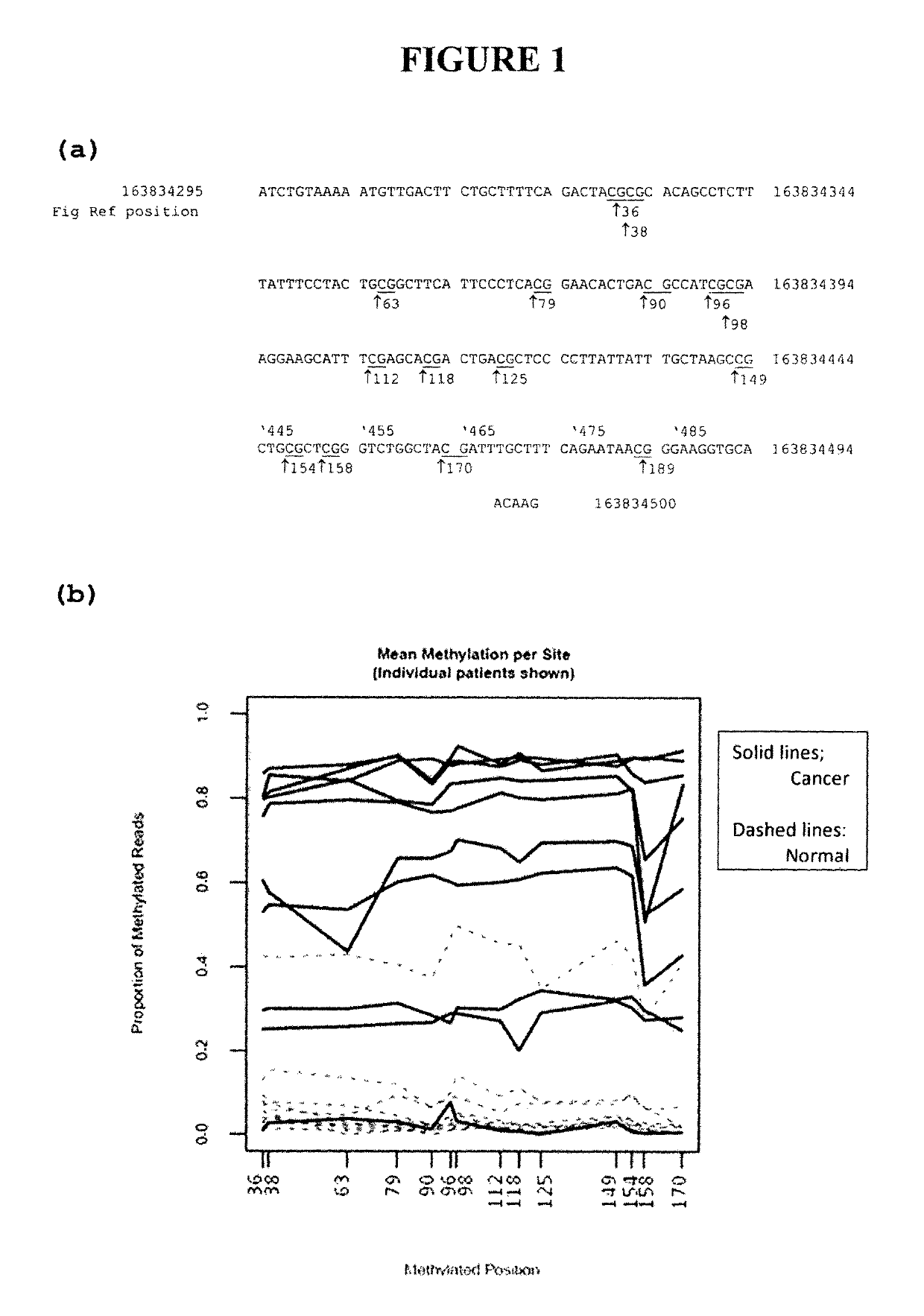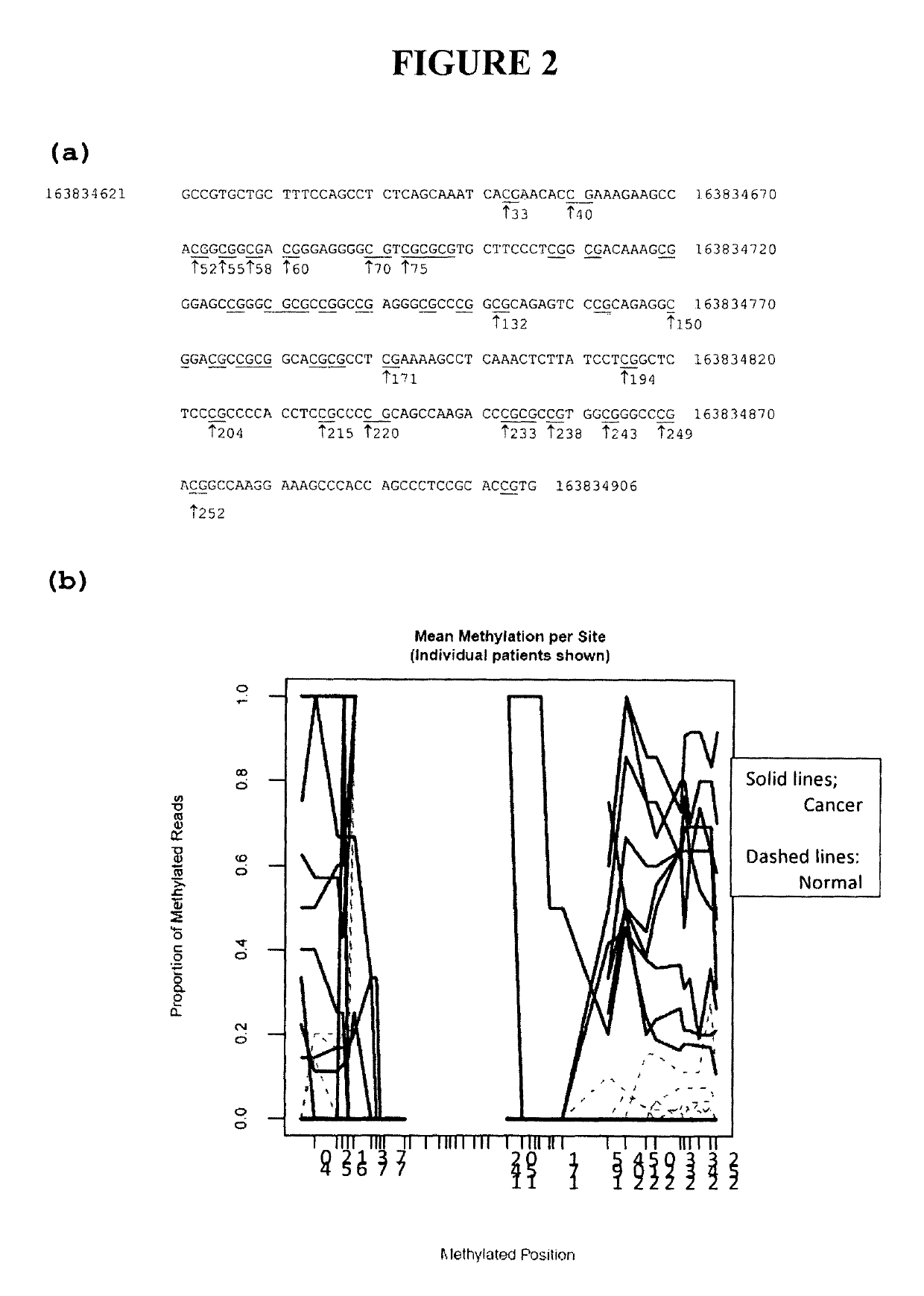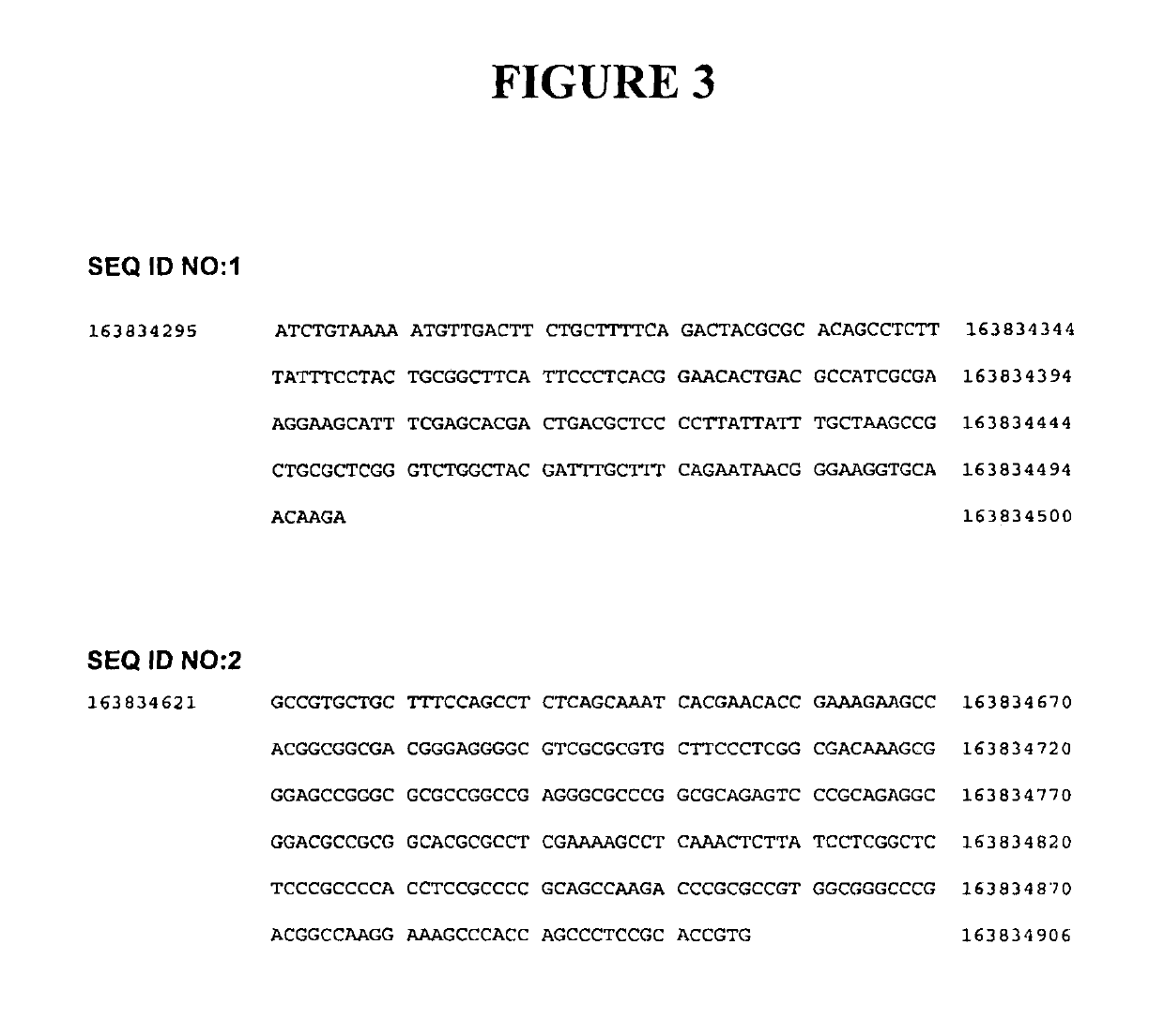DNA methylation in colorectal and breast cancer diagnostic methods
a colorectal and breast cancer and methylation technology, applied in the field of nucleic acid molecules, can solve the problems of confusion, observation error, poor survival rate, etc., and achieve the effect of facilitating detection
- Summary
- Abstract
- Description
- Claims
- Application Information
AI Technical Summary
Benefits of technology
Problems solved by technology
Method used
Image
Examples
example 1
Identification of Putative Region of Differential DNA Methylation
[0273]Genome-wide analysis of DNA methylation using the Bisulfite-tag procedure described in International Patent Publication No. WO2011 / 017760 was applied to three colorectal cancer cell lines, HCT116, SW480 and LIM in comparison with DNA from peripheral blood. This technique characterises the level of DNA methylation at TaqI (TCGA) and MspI (CCGG) restriction sites. Among the differentially methylated sites identified was a CpG site within a TaqI restriction site located on Chromosome 6, position 163,834,406. This site also showed differential methylation in comparison to samples of 8 colorectal cancer DNAs with their 8 matched normal tissue DNAs. This site was identified to lie within the previously uncharacterised gene Refseq LOC100526820 and DNA methylation in this and surrounding sequence was investigated as described hereafter. The gene has subsequently been named CAHM (colorectal adenocarcinoma hypermethylated)...
example 2
Methylation of Cytosines in SEQ ID NO:1 in Colorectal Tissue Specimens from 10 Normal Tissue Specimens and 10 Colorectal Cancer Specimens
[0274]Primers were designed to amplify two regions of the LOC 100526820 gene after chemical conversion with sodium bisulfite. Reaction with sodium bisulfite converts cytosine to uracil (subsequently amplified as thymine) while leaving 5-methyl cytosine unconverted; primers were designed to equivalently amplify methylated and unmethylated DNA sequences.
[0275]
Forward primer:(SEQ ID NO: 18)5′ATTTGTAAAAATGTTGATTTTTGTTTTTTAGATReverse primer:(SEQ ID NO: 19)5′TCTTATTACACCTTCCCRTTATTCTA
[0276]The primers were used for PCR from bisulfite treated DNA of 10 colorectal cancer specimens, their matched normal tissue and normal blood DNA. Amplification was done using Promega GoTaq master mix (without SybrGreen), 3 mM MgCl2 and with primers at 200 nM and 10 ng of input DNA. Cycling conditions were 95° C., 2 min (1 cycle, followed by 50 cycles of 95° C. 15 sec, 56° ...
example 3
Methylation of Cytosines in SEQ ID NO:2 in Colorectal Tissue Specimens from 10 Normal Tissue Specimens and 10 Colorectal Cancer Specimens
[0278]An adjacent region SEQ ID NO:2 shown in FIG. 2(a), was analysed as for SEQ ID NO:1 using the primer pair:
[0279]
Forward primer:(SEQ ID NO: 20)5′GTYGTGTTGTTTTTTAGTTTTTTAGTAAATTReverse primer:(SEQ ID NO: 21)5′CACRATACRAAAAACTAATAAACTTTCCTTA
[0280]FIG. 2(b) shows the profile of methylation at each of the CpG sites within the amplicon. The solid lines represent cancer samples and the corresponding dashed lines show the methylation status of the matched normal tissue DNA. The sequence characteristics of the central region of the amplicon limited read length in the Roche 454 sequencing system; thus only CpG sites proximal to the starting end of the sequence read could be assessed. Nevertheless, it is clear that cancer-specific hypermethylation includes the first 6 CpG sites (to base 61, Chromosome co-ordinates 163,834,653 to 163,834,6681) at the left...
PUM
| Property | Measurement | Unit |
|---|---|---|
| size | aaaaa | aaaaa |
| temperature | aaaaa | aaaaa |
| temperatures | aaaaa | aaaaa |
Abstract
Description
Claims
Application Information
 Login to View More
Login to View More - R&D
- Intellectual Property
- Life Sciences
- Materials
- Tech Scout
- Unparalleled Data Quality
- Higher Quality Content
- 60% Fewer Hallucinations
Browse by: Latest US Patents, China's latest patents, Technical Efficacy Thesaurus, Application Domain, Technology Topic, Popular Technical Reports.
© 2025 PatSnap. All rights reserved.Legal|Privacy policy|Modern Slavery Act Transparency Statement|Sitemap|About US| Contact US: help@patsnap.com



